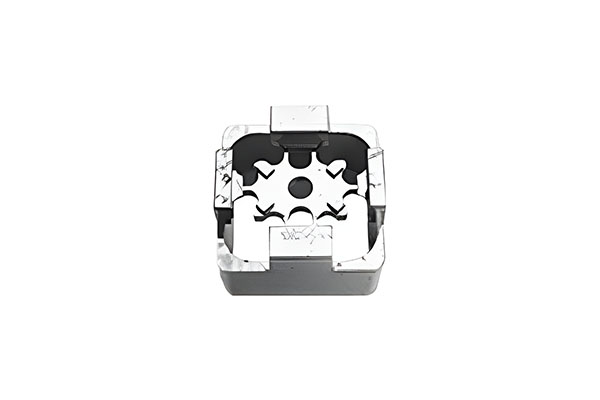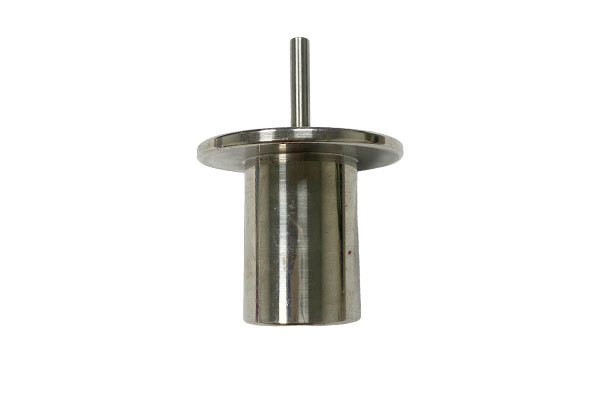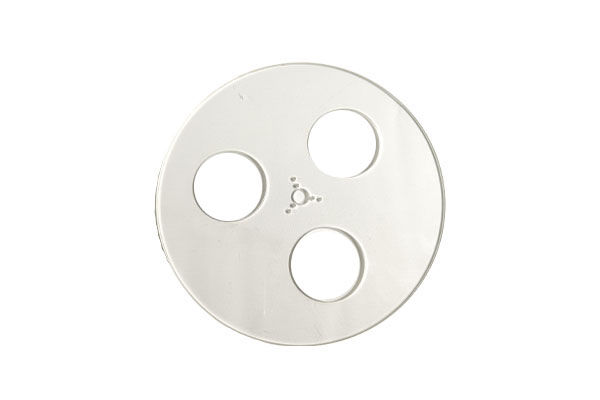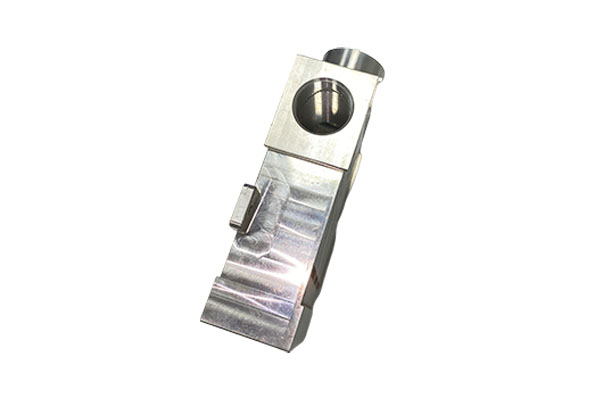What are the outstanding performances of Five-Axis Parts Processing in complex mold manufacturing?
Release Time : 2024-11-06
Five-Axis Parts Processing shows excellent performance in complex mold manufacturing, mainly reflected in its flexibility, precision, efficiency and complex surface processing capabilities.
1. Flexibility
The flexibility of a five-axis machining center is one of its most significant advantages. Five-axis machining means that the machine tool is able to move in five degrees of freedom: three linear axes (X, Y, Z) and two rotary axes (A and C axes, or B and C axes). This multi-axis linkage capability allows the processing tool to approach the workpiece from any angle and realize the processing of complex curved surfaces.
Any-angle processing: Five-axis machine tools can cut at any angle and direction without re-clamping the workpiece or changing fixtures, thus reducing errors and man-hours during the processing.
Reduce the number of clamping times: For complex molds, it is usually necessary to process multiple faces. Five-axis machining can complete the processing of all surfaces in one clamping, improving the consistency and accuracy of processing.
2. Accuracy
Five-axis machining can significantly improve machining accuracy, which is especially important in complex mold manufacturing. High-precision molds are key to ensuring the accuracy and performance of the final product.
Reduce error accumulation: Five-axis machining reduces the error accumulation caused by multiple clamping and repositioning, improving overall machining accuracy.
Microscopic surface processing: Five-axis processing can achieve micron-level precision control and is suitable for processing high-precision complex curved surfaces and microstructures, such as mirror molds, micro injection molds, etc.
3. Efficiency
Improving machining efficiency is another major advantage of five-axis machining, especially in complex mold manufacturing.
Shorten the processing cycle: Five-axis machining can complete the processing of multiple surfaces in one clamping, reducing clamping and adjustment time, and significantly shortening the processing cycle.
Optimize tool paths: Five-axis machine tools can optimize tool paths, reduce unnecessary idle travel and non-productive time, and improve cutting efficiency.
4. Complex surface processing capabilities
Complex molds usually contain complex surfaces and geometric shapes, such as free-form surfaces, streamlined surfaces, etc. Five-axis machining has powerful complex surface processing capabilities and can achieve high-quality processing of these complex geometric shapes.
Free-form surface processing: Five-axis machine tools can perform continuous cutting along complex curved surfaces to achieve high surface quality and fine surface contours.
Streamlined mold processing: For molds that require highly streamlined molds (such as automobile molds and aviation molds), five-axis processing can ensure smooth transition and high precision of the curved surface.
5. Reduce secondary processing
Five-axis machining can reduce the need for secondary machining, thereby reducing overall manufacturing costs.
One-time molding: Five-axis machining can complete the main processing of complex molds in one clamping, reducing subsequent trimming and polishing work.
Reduced hand trimming: High-precision five-axis machining reduces the need for hand trimming of molds, saving labor costs and improving production consistency.
6. Application cases
Automotive mold manufacturing:
Engine hood mold: Five-axis machining can achieve high-precision processing of complex curved surfaces to ensure the streamlined design of the engine hood.
Body mold: Five-axis machining can process complex body molds to ensure high precision and appearance quality of the body.
Electronic product mold manufacturing:
Mobile phone case mold: Five-axis machining can achieve high-precision processing of tiny curved surfaces to ensure the appearance quality and fineness of the mobile phone case.
Laptop shell mold: Five-axis machining can process complex streamlined shell molds to improve the appearance and feel of the product.
Medical device mold manufacturing:
High-precision molds: Five-axis machining can realize high-precision medical equipment molds to ensure the accuracy and functionality of the equipment.
Complex structure molds: Five-axis machining can process complex internal structure molds to meet the special needs of medical equipment.
Five-Axis Parts Processing's outstanding performance in complex mold manufacturing is mainly reflected in its flexibility, precision, efficiency and complex surface processing capabilities. Five-axis machining significantly improves the efficiency and quality of mold manufacturing by reducing error accumulation, improving machining accuracy, shortening machining cycles, optimizing tool paths, and achieving high-precision machining of complex curved surfaces. This makes five-axis machining more and more widely used in fields such as automotive molds, electronic product molds, and medical equipment molds.
1. Flexibility
The flexibility of a five-axis machining center is one of its most significant advantages. Five-axis machining means that the machine tool is able to move in five degrees of freedom: three linear axes (X, Y, Z) and two rotary axes (A and C axes, or B and C axes). This multi-axis linkage capability allows the processing tool to approach the workpiece from any angle and realize the processing of complex curved surfaces.
Any-angle processing: Five-axis machine tools can cut at any angle and direction without re-clamping the workpiece or changing fixtures, thus reducing errors and man-hours during the processing.
Reduce the number of clamping times: For complex molds, it is usually necessary to process multiple faces. Five-axis machining can complete the processing of all surfaces in one clamping, improving the consistency and accuracy of processing.
2. Accuracy
Five-axis machining can significantly improve machining accuracy, which is especially important in complex mold manufacturing. High-precision molds are key to ensuring the accuracy and performance of the final product.
Reduce error accumulation: Five-axis machining reduces the error accumulation caused by multiple clamping and repositioning, improving overall machining accuracy.
Microscopic surface processing: Five-axis processing can achieve micron-level precision control and is suitable for processing high-precision complex curved surfaces and microstructures, such as mirror molds, micro injection molds, etc.
3. Efficiency
Improving machining efficiency is another major advantage of five-axis machining, especially in complex mold manufacturing.
Shorten the processing cycle: Five-axis machining can complete the processing of multiple surfaces in one clamping, reducing clamping and adjustment time, and significantly shortening the processing cycle.
Optimize tool paths: Five-axis machine tools can optimize tool paths, reduce unnecessary idle travel and non-productive time, and improve cutting efficiency.
4. Complex surface processing capabilities
Complex molds usually contain complex surfaces and geometric shapes, such as free-form surfaces, streamlined surfaces, etc. Five-axis machining has powerful complex surface processing capabilities and can achieve high-quality processing of these complex geometric shapes.
Free-form surface processing: Five-axis machine tools can perform continuous cutting along complex curved surfaces to achieve high surface quality and fine surface contours.
Streamlined mold processing: For molds that require highly streamlined molds (such as automobile molds and aviation molds), five-axis processing can ensure smooth transition and high precision of the curved surface.
5. Reduce secondary processing
Five-axis machining can reduce the need for secondary machining, thereby reducing overall manufacturing costs.
One-time molding: Five-axis machining can complete the main processing of complex molds in one clamping, reducing subsequent trimming and polishing work.
Reduced hand trimming: High-precision five-axis machining reduces the need for hand trimming of molds, saving labor costs and improving production consistency.
6. Application cases
Automotive mold manufacturing:
Engine hood mold: Five-axis machining can achieve high-precision processing of complex curved surfaces to ensure the streamlined design of the engine hood.
Body mold: Five-axis machining can process complex body molds to ensure high precision and appearance quality of the body.
Electronic product mold manufacturing:
Mobile phone case mold: Five-axis machining can achieve high-precision processing of tiny curved surfaces to ensure the appearance quality and fineness of the mobile phone case.
Laptop shell mold: Five-axis machining can process complex streamlined shell molds to improve the appearance and feel of the product.
Medical device mold manufacturing:
High-precision molds: Five-axis machining can realize high-precision medical equipment molds to ensure the accuracy and functionality of the equipment.
Complex structure molds: Five-axis machining can process complex internal structure molds to meet the special needs of medical equipment.
Five-Axis Parts Processing's outstanding performance in complex mold manufacturing is mainly reflected in its flexibility, precision, efficiency and complex surface processing capabilities. Five-axis machining significantly improves the efficiency and quality of mold manufacturing by reducing error accumulation, improving machining accuracy, shortening machining cycles, optimizing tool paths, and achieving high-precision machining of complex curved surfaces. This makes five-axis machining more and more widely used in fields such as automotive molds, electronic product molds, and medical equipment molds.







